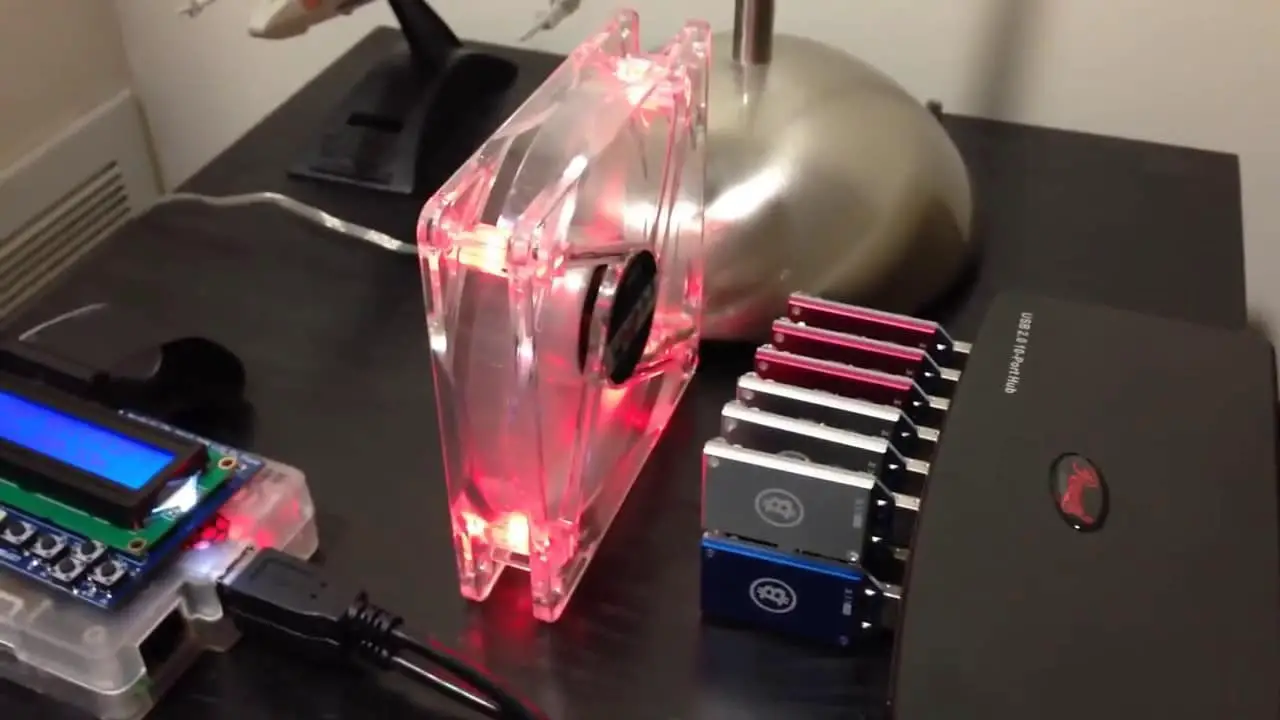
- BITCOIN MINING SOFTWARE FOR RASPBERRY PI MODEL B HOW TO
- BITCOIN MINING SOFTWARE FOR RASPBERRY PI MODEL B INSTALL
- BITCOIN MINING SOFTWARE FOR RASPBERRY PI MODEL B UPDATE
- BITCOIN MINING SOFTWARE FOR RASPBERRY PI MODEL B DRIVER
So far, you've mounted the external hard drive manually, but the next time you boot the machine you'll have to do it again.

dev/sda2 7.3T 320M 7.3T 1% /mnt/bitcoin Set up automatic mounts

You should see something like the following: Filesystem Size Used Avail Use% Mounted on To verify that the disk was mounted correctly, run: df -h Sudo mount /dev/sda2 /mnt/bitcoin Verify the disk was mounted properly Because the device will hold Bitcoin data, we'll name the mount point "bitcoin". It's customary (but not required) to put disk mounts in /mnt. Create the mount point and mount the disk It's often something like /dev/sda1 or /dev/sda2. First, get the location of the disk partition we want to mount using: sudo blkidĪgain, look for the label and copy the first column. Next, you'll need to mount the storage device onto your Raspberry Pi.

BITCOIN MINING SOFTWARE FOR RASPBERRY PI MODEL B INSTALL
Sudo apt install exfat-fuse Mount the drive Get the disk partition location
BITCOIN MINING SOFTWARE FOR RASPBERRY PI MODEL B UPDATE
ntfsįor ntfs devices, use: sudo apt-get update Use the LABEL column to identify your storage device and the FSTYPE column to find the file system type. To find the file system type of your hard drive, you can type: sudo lsblk -o UUID,NAME,FSTYPE,SIZE,MOUNTPOINT,LABEL You can also reformat the hard drive using a different file system type, but that's beyond the scope of this guide.
BITCOIN MINING SOFTWARE FOR RASPBERRY PI MODEL B DRIVER
The storage driver depends on the file system type used on the hard drive. Install the necessary storage driversĭepending on the hard drive you purchase, you'll need to install the necessary storage driver for the Pi. In order to use the hard drive to store blockchain data, you'll need to configure the Pi and mount the drive. If you're new to Raspberry Pi, then you'll likely want to get a kit like the Canakit for the Raspberry Pi 4 that I'm using for this guide. Just make sure that with any option you choose, you have over 350GB of available space. You could also use a high capacity micro SD card or a high capacity thumb drive. But because running a full node involves downloading the entire Bitcoin blockchain, which is a few hundred gigabytes (and growing), we're going to add an external hard drive to the setup. So generally Raspberry Pi users will run the operating system on a small-ish micro SD card. One thing you might notice is that the Raspberry Pi doesn't ship with storage. A machine running a full node can also be used for other tasks, but because a full node should be connected to the network at least six hours a day (and ideally continuously), it makes sense to use an inexpensive computer dedicated to the task. The Raspberry Pi is small, inexpensive, and meets the minimum requirements for running a Bitcoin full node.
BITCOIN MINING SOFTWARE FOR RASPBERRY PI MODEL B HOW TO
In this guide, we're going to learn how to run a full node using a Raspberry Pi 4 and an external hard drive. In order for the Bitcoin network to operate securely, it requires many additional full nodes to ensure the miners are following the consensus rules and help relay transactions to other nodes in the network.Īnd since there is no direct financial incentive to run a full node (unlike mining), it requires good Bitcoin citizens to step up and help out. And while mining can be lucrative, it also requires an upfront investment and uses a considerable amount of energy.

When a miner (or mining pool) is the first to publish a new block, it receives a mining reward. If a miner tries to publish a block that doesn't follow the rules, it will simply be ignored. Other nodes, simply called full nodes, verify the transactions and ensure that miners are following the consensus rules. Some nodes, called miners, record new transactions by publishing them in "blocks". In order for the Bitcoin network to operate securely, it requires many additional full nodes to ensure the miners are following the consensus rules.


 0 kommentar(er)
0 kommentar(er)
